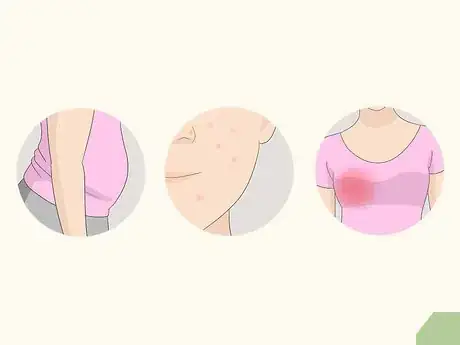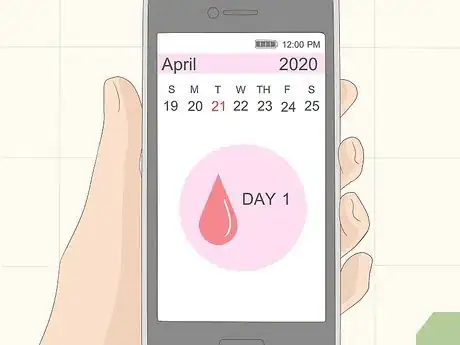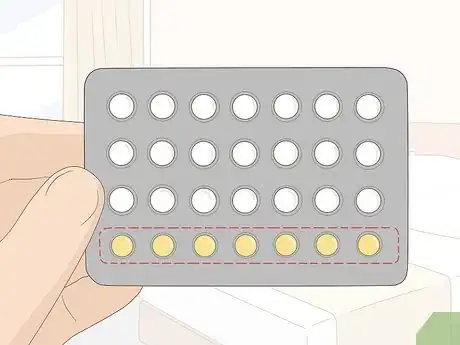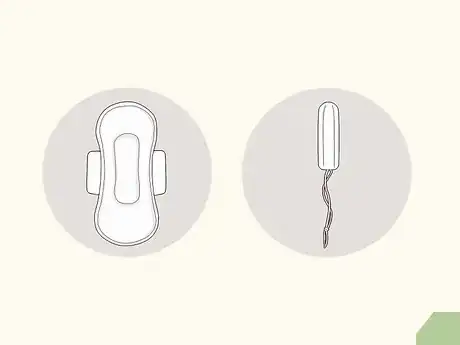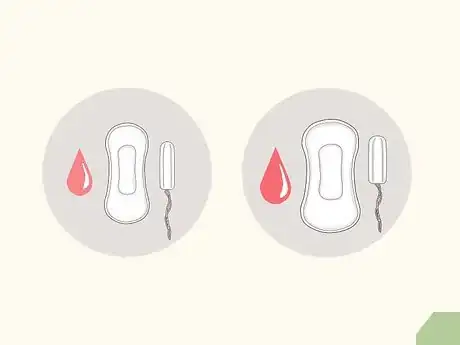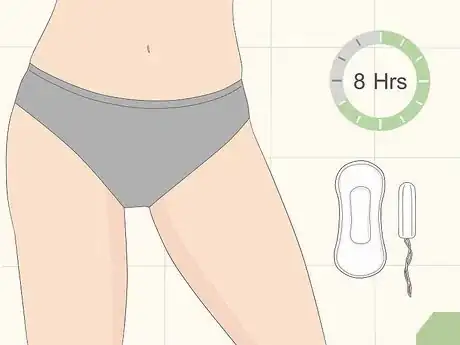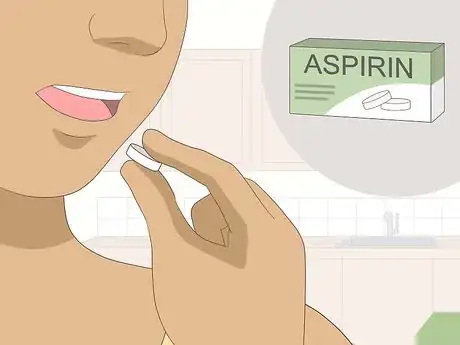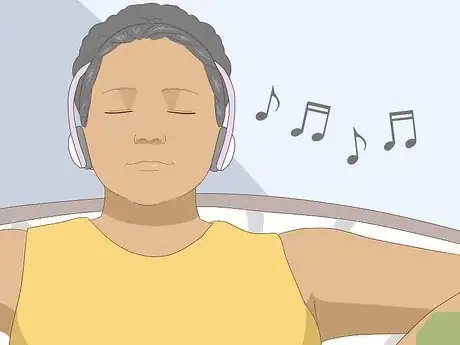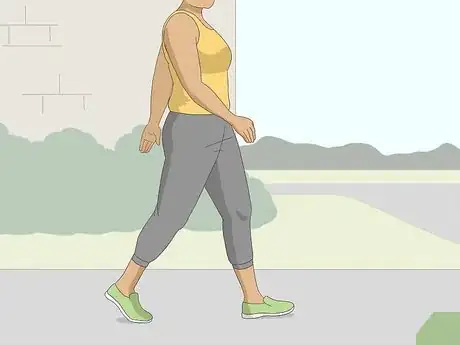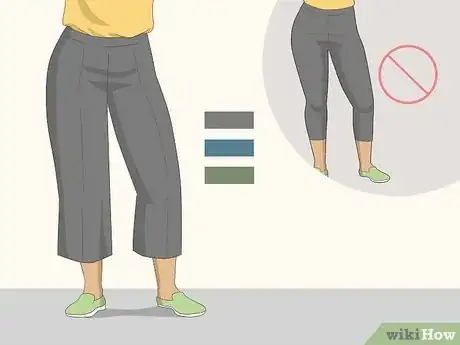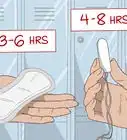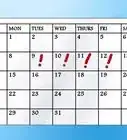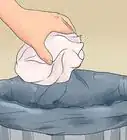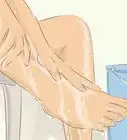This article was co-authored by wikiHow staff writer, Hannah Madden. Hannah Madden is a writer, editor, and artist currently living in Portland, Oregon. In 2018, she graduated from Portland State University with a B.S. in Environmental Studies. Hannah enjoys writing articles about conservation, sustainability, and eco-friendly products. When she isn’t writing, you can find Hannah working on hand embroidery projects and listening to music.
There are 8 references cited in this article, which can be found at the bottom of the page.
wikiHow marks an article as reader-approved once it receives enough positive feedback. In this case, 93% of readers who voted found the article helpful, earning it our reader-approved status.
This article has been viewed 400,312 times.
Learn more...
With symptoms like cramps, bloating, and tiredness, you probably don't spend a lot of time looking forward to your next period. But with a little preparation, your next period can be stress-free, even if you start at work or school. Our guide has all the tips you need to have a worry-free period, from easing your cramps and reducing your stress to choosing hygiene products and avoiding leaks.
Steps
Watch for PMS symptoms before your period.
-
Pay attention to cramps, bloating, or breakouts. Premenstrual Syndrome, or PMS, is a good indicator that you are about to get your period. Sore breasts, mood swings, and feeling tired are all signs that your period could be coming within the next few days, especially if it’s been about a month since your last period.[1] X Research source
- Not everyone gets PMS before every period, but getting familiar with the symptoms you usually experience can help you have an idea when your period is coming.
Keep up with your cycle with a period tracker.
-
A tracker will give you an estimate of when your period should start. Periods usually come around once a month, but everyone’s cycle is different. Enter the date of your last cycle into a period tracker on your phone or computer to estimate when exactly your period will come next. This will help you avoid the stress of guessing when your period is about to start.[2] X Research source
- Clue, Flo, Cycles, and Eve are all popular period tracker apps.
- If this is your first period, enter the date of when you started your current cycle.
Track the placebos in your birth control pills.
-
You'll have a period when you're taking these inactive pills. Although a birth control pill pack has 28 pills in it, only 21 of those are active. The other 7 are sugar pills. These pills, which may be a different color than your other pills, are an indicator of when you will have your period. If you are taking birth control pills that give you a normal monthly cycle, keep track of the sugar pills as a sign that you’ll be having your period.[3] X Trustworthy Source Mayo Clinic Educational website from one of the world's leading hospitals Go to source
Warning: Some birth control pills do not contain sugar pills in every pack. Talk with your doctor if you are confused about your birth control pills.
Keep a stash of pads or tampons in your purse or backpack.
-
It’s no fun to be caught off guard when your period starts. To avoid the mad scramble to the store, keep 2 or 3 pads and tampons in your bag that you use every day. Replenish your stash often.[4] X Research source
- You can also hand out pads and tampons to your friends who might need them.
- If you don’t have your own stash of feminine products, ask a friend or head to the school nurse to request some when you get your period.
Figure out if you prefer pads or tampons.
-
There's no right or wrong answer here. If you just recently got your period, it may be best to stick with pads for a while. If you feel comfortable, you can try out using a tampon instead. Tampons allow for more movement and can feel more comfortable during physical activities, like sports and gym classes. Keep whichever product you are most comfortable with around to use during your period.[5] X Research source
Tip: If you’ve never used a tampon before, read the instructions that come with the box.
Reduce waste with a menstrual cup or reusable pads.
-
They'll save money in the long run, too. If you hate the waste of disposable pads and tampons, consider switching to a sustainable method. Menstrual cups act like tampons and catch the blood before it leaves your body. Reusable pads are just like regular pads, except instead of throwing them away, you wash them and reuse them. Although these products can cost more than normal pads and tampons up front, you will save money in the long run by using them.[6] X Research source
- If you are just having your period for the first time, consider using pads for a while and then working up to a menstrual cup. They can take some practice to insert.
Choose the correct size of pads or tampons for your flow.
-
The right absorbency will help prevent leaks. If you have a heavy flow, you may need super absorbent pads and tampons that get changed every few hours. If your flow is less heavy, you might use regular pads or tampons and change them every 6 hours. Try out different absorbances to see which is right for your period.[7] X Research source
- It is always better to go for a more absorbent product. That way, if your flow is heavier than you expected, you won’t have a leak.
- If your flow is super heavy, you can wear a pad and a tampon at the same time.
- Most periods start out heavy toward the beginning of your cycle and get lighter as it continues.
Change your feminine product regularly.
-
Plan to use a new tampon or pad at least every 8 hours. If you are using a tampon, change it at least every 8 hours to avoid Toxic Shock Syndrome. Toxic Shock Syndrome is a rare but life-threatening mix of bacteria that can build up on a tampon. Change your pad about every 8 hours or whenever it becomes uncomfortably full of blood.[8] X Research source
- If you have a heavy flow, you may need to change your pad or tampon every few hours.
- Changing your feminine product regularly also helps avoid unwanted odors.
- Never wear a tampon to bed unless you know you will only be sleeping for 8 hours and are able to change it right when you wake up.
Take an over-the-counter painkiller if you're achy.
-
OTC pain medicines can be helpful at easing cramps and body aches. Take the recommended dose for your age every 8 hours until your cramps have stopped. Pain killers can also help with headaches and muscle aches that may happen during your period.[9] X Trustworthy Source National Health Service (UK) Public healthcare system of the UK Go to source
- Midol is a painkiller made specifically for period pain.
Use a heating pad or warm bath to relieve your cramps.
-
The warmth will help ease your pain and help you relax. An electric heating pad or hot water bottle might be just the trick to help you feel better while you're relaxing on the couch. Similarly, you might take a long shower or a warm bath, allowing the water to cover your torso until your cramps ease up.[10] X Trustworthy Source National Health Service (UK) Public healthcare system of the UK Go to source
Manage your stress to stay relaxed.
-
Being stressed can make you feel worse. Do some relaxing exercises like meditation, yoga, or a long walk. Or, try deep-breathing exercises, listening to calming music, or writing in a journal. Try to keep your stress levels at a minimum while you are on your period.[11] X Trustworthy Source Harvard Medical School Harvard Medical School's Educational Site for the Public Go to source
- Stress relief is different for everyone. Find an activity that you know will relax you to help during your period.
Do some light exercise to relieve pain.
-
Getting up and moving can ease cramps. It may seem counterintuitive, but exercises like cycling, swimming, or walking can help to take your mind off of your period pain and may even help lessen your cramps. If you feel up to it, consider doing a fun physical activity that you enjoy. It can be something small like a walk around the block, or something longer like a jog around the neighborhood.[12] X Trustworthy Source National Health Service (UK) Public healthcare system of the UK Go to source
- Don’t feel bad if you are too tired to exercise while you’re on your period. A major side effect of your period is fatigue.
Wear comfortable, dark colored clothing when you go out.
-
Bloating and leaks can make you feel uncomfortable. If you have school or work when you are on your period, consider ditching the skinny jeans and opting for sweatpants or loose fitting jeans that aren’t snug around your waist. Choose tops that aren’t super tight to leave room for bloating and make you feel more at ease.[13] X Research source
- Keep a jacket to tie around your waist in case of leaks.
- Wearing dark-colored pants can help avoid the embarrassment of a leak showing up through your jeans.
- Avoid wearing white pants or shorts while you are on your period. A leak is much more likely to show up on white colored bottoms.
Warnings
- If you have debilitating pain during your period that you can’t relieve, talk to your doctor.⧼thumbs_response⧽
You Might Also Like

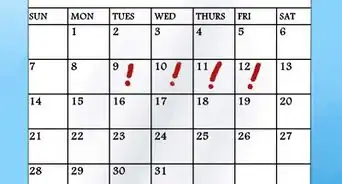

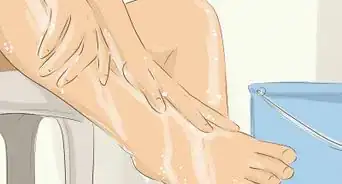
 How to Call in Sick Because of Your Period
How to Call in Sick Because of Your Period

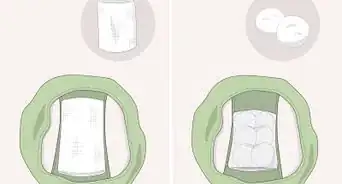
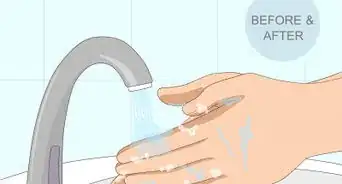

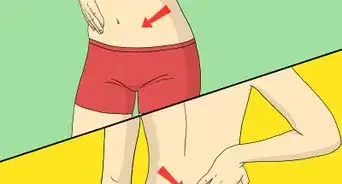



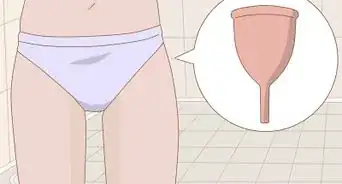
References
- ↑ https://www.plannedparenthood.org/learn/teens/puberty/whats-periods
- ↑ https://kidshealth.org/en/kids/period-school.html
- ↑ https://www.mayoclinic.org/healthy-lifestyle/birth-control/in-depth/womens-health/art-20044044
- ↑ https://kidshealth.org/en/kids/period-school.html
- ↑ https://kidshealth.org/en/teens/supplies.html
- ↑ https://www.nytimes.com/2019/07/16/health/menstrual-cup-periods-women.html
- ↑ https://kidshealth.org/en/teens/supplies.html
- ↑ https://kidshealth.org/en/teens/changing-pads.html
- ↑ https://www.nhs.uk/conditions/period-pain/
About This Article

Periods can be stressful, but if you plan ahead and are prepared, you can stay worry-free! The best way to avoid a surprise period is to keep track of your cycle. Period tracker apps, like Clue or Flo, are really helpful. If you aren’t keeping track of your flow, pay attention to Premenstrual symptoms like cramps, bloating, and breakouts, which usually start a few days before your period. To avoid being caught off guard, keep 2 or 3 pads or tampons in your bag at all times and make sure to replenish your stash often. It’s also important to use the correct size of pads or tampons for your flow. That way, you don’t have to worry about leaks. Finally, make sure to change your menstrual products often, which will keep you clean and prevent dangerous bacteria from building up. You should change your pad or tampon at least every 8 hours, but changing it every 2-3 hours is best. To learn how to stay comfortable on your period, read on!
